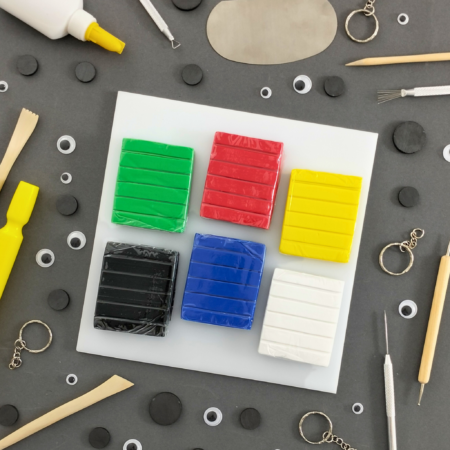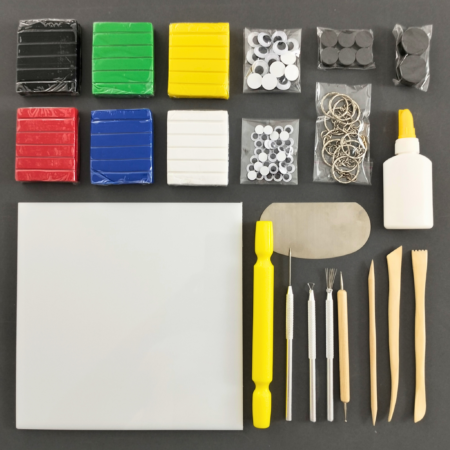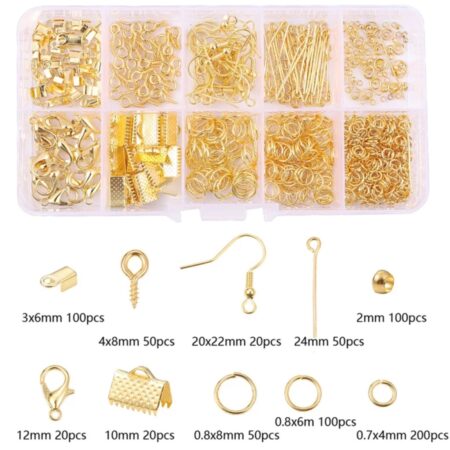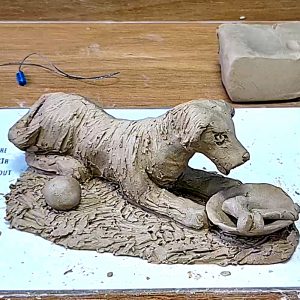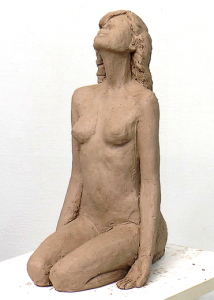Sculpting in polymer clay came into use in the middle of the 20th century and over the years has become a popular material for sculpture and design around the world. Used to create a rich variety of works of art, including figurines and miniatures, dolls, jewelry making, buttons, mosaics and various craft works. It is non-toxic, soft, colorful, easy to work with and allows convenient use for creating delicate and tiny items. Therefore, polymer clay is a great medium for children and beginning artists.
Facts and properties of polymer clay
- Polymer clay is a synthetic raw material for sculpture based on the polymer polyvinyl chloride (PVC). It is non-toxic and suitable for use by children as well. It is a durable material and when stored properly can keep well for years of use.
- It was first used in industry such as the manufacture of doll parts and buttons in Europe. It was later used by the general public when they began to make beads and jewelry from it, as well as to combine it with glass and ceramics.
- Pigments can be added to the polymer clay and it is marketed in a variety of colors and finishes. Material can be mixed in different colors to get different and colorful textures, and there is a wide variety of processing and use methods.
- The final product is obtained after heating and baking in a regular home oven. The colors remain as they were before baking and in addition you can continue to design after baking: paint, sand, drill holes for beads, etc.
An emotional dimension and personal expression that allows sculpting in polymer clay
Kneading the clay, touching, sculpting, testing the clay - are sensual actions, which return the creator to his initial experiences. The material allows for control and loss of control, invites concentration, meditation and a sense of inner peace.
The wide range of possibilities that the clay contains, from vigorous work to delicate work, has long been a wide range of emotions that may arise in the process of working with it.
Sculpting in polymer clay - equipment and related materials
- Work surface - It is recommended to work on a stable work surface made of Plexiglas or Formica.
- rolling pin - For flattening the clay to a flat surface.
- Design tools - For designing small details and different textures.
How to use and work with polymer clay
Soften the clay with your hands. You can mix the colors to get new shades. You can use sculpting tools for design and dedicated stencils for creating shapes. The polymer clay allows for non-continuous work - this means that if you are in the middle of work and need to take a break, you can continue working at another time.
After finishing the sculpture, bake in a home oven (do not put in the microwave!) In order to harden the material. After baking, the clay hardens and no further design can be done, but you can drill holes, sand, paste, paint with acrylic paints and spray paint.
Baking instructions in a home oven: Place the piece on baking paper in a pan. Bake in the oven at 130 degrees (and no more) for 30 minutes. At the end of baking, carefully remove and allow to cool.
After baking, you can continue to shape the work: paint (acrylic or permanent markers), sand, drill holes, glue parts with plastic glue.
Tips and recommendations for polymer clay sculpture:
- It is recommended to use polymer clay for sculpture and creation in small dimensions: making jewelry, beads, charmers, keychains, designed magnets, picture frames and much more. It is also great for cladding and decorating other objects made of glass, wood, metal or plastic.
- The fact that polymer clay does not dry out makes it ideal for children as well. Children can sculpt with the polymer clay for hours and only during the baking phase is adult supervision and help required.
- Avoid over-baking or high-temperature baking. The recommended temperature is 130 degrees for half an hour. The polymer clay is non-toxic and will not contaminate your oven, however it should be baked separately from food.
- We stored the polymer clay in a bag with a closing strip, in a cool place and away from sun exposure, it can also be stored in the refrigerator. In direct sunlight the polymer clay paints may fade over time, for this reason we recommend also storing the works away from windows and sun exposure to keep their colors bright.
- You will find on YouTube countless guides and creative ideas with polymer clay.
Polymer clay products
- "Products not for sale - Hourglass" is un-purchasable.
- You can not add this bundle to the cart.



